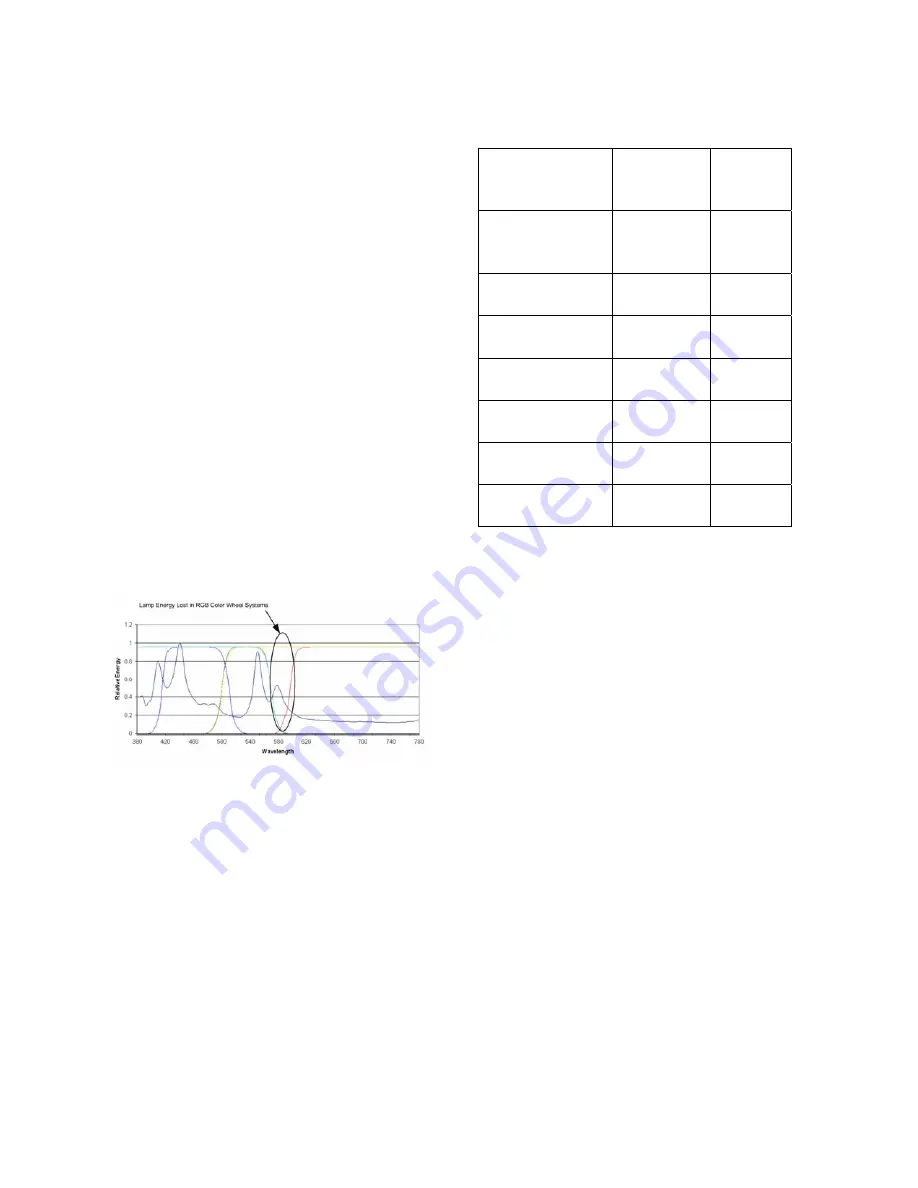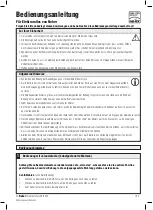
Items such as lumens collected out of the
lam
Illumination Efficiency
age by
spli
p, optical system efficiency, color wheel
efficiency, and screen efficiency impact the
brightness of the display. The screen
brightness is simply the efficiency of the
optical system multiplied by the collected
lumens and the screen gain. Improving any
of the efficiencies in the optical path will
result in an improvement of the screen
brightness.
Improving
Lamp based displays render an im
tting the white spectrum of the lamp into
the three primary colors, red, green, and
blue. In order to achieve the standard color
gamut required for TVs and projectors, the
generation of the red, green, and blue light
components does not utilize the entire
energy spectrum available from the lamp.
This light loss is a result of the fact that parts
of the lamp energy are not contained within
the red, green, and blue filters used to render
the image (reference Figure 3).
Figure 3 – Spectral Energy Distribution of a
olor™ technology resolves
this
typical Lamp
BrilliantC
problem through the utilization of
additional color filters. In Figure 3, there is
a significant amount of lamp energy that is
not utilized at the 580nm wavelength. This
energy can be recaptured through the use of
a yellow filter. Also, a cyan filter will
improve the efficiency in the 500nm region.
Designing a projection system that uses a 5-
color illumination system can improve the
end brightness by as much as 50%. Table 1
shows the improvement that can be gained
in a DLP® display system using the new .45
720p DMD and a 5-color wheel.
Common
Color
Wheel
5 Color
Wheel
Collected
Lumens at the
DMD
3375 3375
Optical
Efficiency
35.8% 35.8%
Color Wheel
Efficiency
16.5% 24.7%
Screen Gain
Factor
4.7 4.7
Screen
Diagonal
60 60
Luminance
(Nits)
300 450
Luminance
Gain
baseline 50%
Table 1 -- Luminance Gain from BrilliantColor™
in an Example .45 720p system
Improved Color Gamut
In addition to improved system
illumination efficiency, BrilliantColor™
technology also allows for a much broader
color gamut. The color gamut of a red,
green, blue display is defined as the area of
colors bounded by the triangle whose points
are defined by the colorimetric settings of
the red, blue, and green filters. Any color
that can be displayed on the system is some
combination of the red, green, and blue
colors. Though this color space is suitable
for many applications, it does not allow for
the creation of vivid colors such as yellow
and cyan. The reason for this is that the
vivid yellow (or cyan) that we frequently see
in nature is outside of the area bounded by
the triangle. Adding additional color to the
rendering engine allows us to expand the
triangle into a wider polygon resulting in a
greater selection of colors. Figure 4 shows
the triangle used by the Rec. 709 color
standard used by many televisions today.
3























